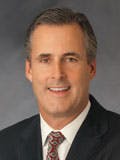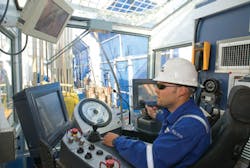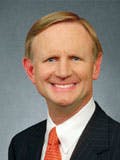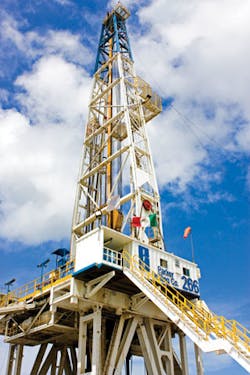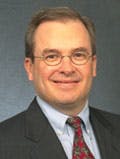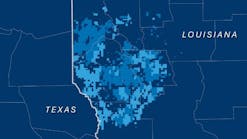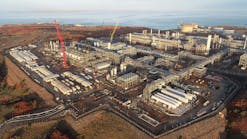Parker Drilling specializes in difficult challenges and complex environments
Don Stowers, Editor, OGFJ
EDITOR'S NOTE: OGFJ editor Don Stowers spoke with Parker Drilling Company's David C. Mannon and W. Kirk Brassfield in October to see how their company is coping with the economic downturn. Mannon, formerly president and COO, was recently promoted to CEO. He succeeds Robert L. (Bobby) Parker Jr., who will retain the position of executive chairman of the board of directors. Brassfield is senior vice president and CFO.
All photos courtesy of Parker Drilling Co.
OIL & GAS FINANCIAL JOURNAL: Tell our readers a little about Parker Drilling.
DAVID MANNON: This year marks Parker Drilling Company's 75th anniversary. We started in 1934 with one land rig in Tulsa, Oklahoma. Today, Parker is a global, diversified provider of drilling solutions targeted to major and national oil companies. We work for a variety of customers, including super majors like ExxonMobil, BP, ENI, and Chevron; independents like Apache, Chesapeake, EOG Resources, Swift, and McMoRan;service companies like Schlumberger and national oil companies such as PEMEX in Mexico and Sonatrach in Algeria.
We operate through four major business segments: international contract drilling, rental tools, domestic barge drilling, and project management. We are best known for our international contract drilling business in which we operate 31 rigs in three regions worldwide. In our barge drilling business, we operate 15 preferred rigs for drilling in US coastal waters. We have Quail Tools, a fast-growing rental tools division that has seven locations throughout the US, predominantly near the unconventional shale plays. Our project management group designs, constructs and operates customer-owned drilling assets –typically very large and complex projects, around the world.
OGFJ: How would you describe your market niche?
MANNON: We specialize in developing drilling solutions in complex environments, including rigs, technical expertise, training, and project management skills to help our E&P customers develop large oil and natural gas reserves. We have expertise in designing and operating solutions in offshore, arctic, desert and deepwater environments. Importantly, we lead the industry in safety, allowing us to retain the best workers and avoid costly and time-consuming accidents. If an operator has a difficult challenge, they call Parker Drilling.
OGFJ: How has the project management side of your business helped during this industry downturn?
MANNON: Project management has done two things for us: 1) It's helped us diversify our portfolio and gets us into areas that demand technology, which we are often able to then use in our drilling contractor business to provide new capabilities or become more efficient; and 2) it also enables us to grow our business in a non-capital intensive manner by allowing us to be a key part of the technology development and operations of complex projects without requiring significant investment of our own capital. These projects usually span 10 to 15 years, often as part of long-term development programs by a super major or a consortium's extended production-sharing agreements with a host government. As a result, these activities often bridge the cycles that lead to volatility in rig utilization and dayrates.
OGFJ: The contract drilling market has been hammered this year. How has Parker Drilling coped with the fast drop in rig count?
MANNON: We're somewhat insulated from the worst of the downturn in the North American drilling market, as a result of our geographic diversity and select presence in the markets we serve. We do not drill on land in the lower 48. Our primary exposure to the US land drilling market is through our rental tools business, which has seven locations that rent needed equipment, such as drill pipe, blow out preventers, and other essential tools for drilling and workover. When drilling is down, operators tend to maintain production by working over wells, creating demand for rental tools and some of our barge rigs. In addition, the new store locations we've put in recent years are in the more active areas in the United States. Our Texarkana store handles the Haynesville, Woodford, and Arkoma basins. Haynesville has been very active in the last nine or 10 months. We also opened up a satellite store in the Marcellus shale area. Drilling in the Marcellus region has gone from just a handful of rigs in the early part of 2009 to 58 rigs recently. There's been a tremendous expansion of activity in that market that we've been able to obtain rental revenues from.
"We have expertise in designing and operating solutions in offshore, arctic, desert and deepwater environments. If an operator has a difficult challenge, they call Parker Drilling."– David Mannon
Clearly our US Gulf of Mexico barge rig fleet has been affected, but we think the bottom was reached several months ago and because of high oil prices and the end of hurricane season, people have decided to go back to work.
Our international contract drilling business remains strong, mainly due to strong oil prices, and we are currently projecting utilization of our international fleet to improve by year-end – up from 61% today. In addition, we are seeing increases in our project management business with revenues through the first nine months of this year running ahead of last year.
OGFJ: Parker Drilling is known for taking on big challenges and setting records in extended reach drilling. What do these record-setting performances mean to investors?
MANNON: The technology developed to set records finds its way into new rig designs to increase the efficiency, safety and performance of Parker's own fleet. Our most recent ERD record was set in 2008 when we drilled directionally nearly seven miles beneath the sea floor with the Yastreb rig. We designed, built, and operate the Yastreb for ExxonNeftegas as part of our ongoing project management work at the Sakhalin-1 project in Russia. The first oil for this project was brought on line in just 30 months. Although setting a world record is always impressive, there was a strong business case for drilling the well that long, which eliminated the need to build an expensive offshore platform and enabled the customer to use existing production facilities and equipment.
Our experience at Sakhalin-1 is being put to work on the Liberty project, in which Parker designed, constructed, and will operate the Liberty rig for BP. The land-based Liberty rig will be used to develop the Liberty field, located five miles offshore the Alaskan Beaufort Sea, using ultra-extended-reach drilling technology. The Liberty will be capable of drilling out even farther than the Yastreb, enabling BP to produce this field without building a remote offshore island and pipeline infrastructure, thus significantly reducing environmental impacts of this new development. This highlights the expertise we can apply to a project in a remote, difficult region under arctic conditions.
These accomplishments have translated into real value and opportunity for investors. Parker's record-setting performances and international breadth attracts business from the super majors and large independents helping fuel the pipeline for ongoing business for years to come. Being successful, both operationally and financially, on projects for these discerning customers leads others to consider Parker Drilling when they have drilling projects.
OGFJ: How do you evaluate results and improve operations going forward?
MANNON: We continually look at the performance of our rigs and the technology we deploy in an effort to drill more efficiently and safely for the customer. This improves the economic returns from their well programs and respects the wellbeing of the people involved and of the environment. Oftentimes in the contract drilling business, if you drill faster, you drill yourself out of work. We think there's work out there for a performance contractor that can drill wells faster for the customer that result in equal or better value, all things considered, and they're willing to pay us a higher dayrate for that value.
OGFJ: What are your plans for managing liquidity and debt through this down cycle in the industry?
KIRK BRASSFIELD: Early in the decade, Parker made three acquisitions and financed those with debt resulting in a highly leveraged capital structure just as we entered an industry down-cycle. At that point, we were faced with some very difficult decisions. We knew we had to reduce debt and strengthen our balance sheet, so we identified assets that we deemed non-core, which included our jack-up rigs and some non-strategic rigs in South America and Nigeria. We sold these assets and used the cash to reduce our debt and, by 2007 had brought our debt load down from 70% of total capital to 40%. This improvement in our financial structure has better positioned Parker to move through future business cycles, allowing us to continue to grow in up cycles and be better able to weather down cycles.
During the 2005-2008 timeframe we began growing our business. We added six land rigs, one ultra-deep barge rig, and expanded our rental tool locations from four to six. During this period we saw some excellent revenue and earnings growth, but more importantly, we managed to keep the debt portion of our capital structure in the 40% range. When the latest down-cycle hit in the latter part of 2008, we had put in place three tranches of debt. We had a convertible debenture of about $125 million outstanding and $225 million in senior notes. But more importantly, we had increased our revolver and added a term note to a facility totaling $130 million that we finalized in May 2008. The primary purpose of the credit facility was to have the funds available for the construction of two new arctic drilling rigs to satisfy a contract with BP for five years of development drilling in Alaska. In addition to the Liberty project, these would represent Parker's return to Alaska and opening a new region of growth for the company's international drilling business. This begins in early 2010 when the BP-owned Liberty rig is expected to spud, and will be followed later in 2010 with the delivery and initial operation of the two Parker-owned arctic land rigs.
As a result of our current capital structure, we have no immediate need to refinance our debt. Our earliest debt maturity is 2012, and the bulk is in 2013. And, our operating performance is well within covenant requirements. The disciplined management of our capital structure has positioned us to weather the crisis and should allow us to continue to grow and prosper. That is probably something you couldn't say 10 years ago about Parker Drilling.
OGFJ: That was certainly good timing on your part to increase your revolver and add the term loan back in May of 2008.
BRASSFIELD: Yes, we'll be happy to accept credit for good timing on that right along with our ability to predict gas prices.
OGFJ: Which business segments offer the most growth potential?
BRASSFIELD: The project management business is a strong one for growing cash flow and profitability with minimal capital investment. Our backlog of contracted project management business at the end of 2008 was $307 million, which provides us with strong revenue visibility for this year and into 2010. We expect to grow this backlog this year.
OGFJ: What makes the international drilling business more attractive than the domestic market for you?
MANNON: The international markets we have chosen to work in have operating characteristics that we believe lead to better opportunities for good financial results. One key characteristic is that international drilling customers are generally targeting oil reserves. Building and developing oil reserves remains the primary focus of international oil companies and national oil companies. Consequently, international drilling programs tend to be longer in duration and less volatile than we have experienced in US land and inland water drilling in recent years. Also, our rig performance capabilities are focused on meeting more challenging technical and operating requirements. There aren't as many equally competent contractors in this arena for us to compete against. And lastly, we have focused our drilling fleet in markets where we believe the demand for our capabilities will grow over time. We believe that clustering our rigs in select international markets where we are a preferred partner leverages our competitive strengths and leads to better financial outcomes for the company and our shareholders.
OGFJ: What have you learned from your Saudi Arabian joint venture experience?
MANNON: We entered the Saudi Arabian market through a joint venture structure, which is mandated by the laws of that country, and decided to sell our interest in the JV to our Saudi partner in early 2008. That experience changed the way we enter new markets. Today, we look to enter markets where we can secure a high degree of operational control and the ability to cluster our rigs together. When we have those key attributes, we are able to provide the best value to the customer.
OGFJ: Any closing remarks for our readers?
MANNON: I favor the long-term view. When I came on board in 2005, the predominant opinion seemed to be that we're in a different cycle now, completely different metrics this time, and we don't see a down cycle coming…ever. My view is that this has always been a cyclical business, and yes, everything looks rosy now [in 2005] but a down cycle is coming and we'd better prepare for it. It's not realistic to think conditions will always be favorable for your business. We're in a much better position today as a result of planning for adversity and taking positive steps to deal with it. Actually, our mission is not all that much different from Wall Street investors; it's learning how to take advantage of the markets when times are good and having the capacity and insight to strategically invest during a downturn and capture the upside potential when the markets return.
More Oil & Gas Finacial Journal Current Issue Articles
More Oil & Gas Financial Journal Archives Issue Articles

